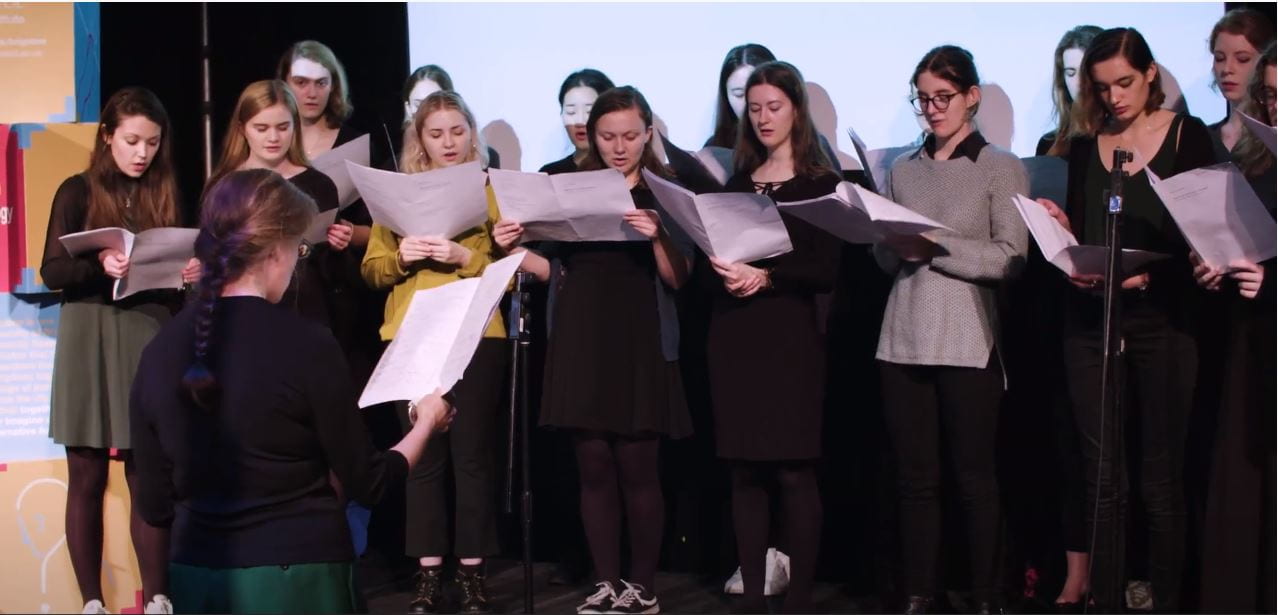Sound and Silence in the Ecology of the Cathedral
How do people seek out and access certain types of sound? What do they think and feel about the sound that they experience? This research will investigate the specific sound ecology within Bristol Cathedral and of the adjacent urban space, College Green.

Image Credit: Jon Rowley
Weekly attendance has increased in cathedrals in recent years. One factor in this may be the regular availability of a special experience of sound. The choral liturgy performed in cathedrals appears to be an appealing aspect of their ‘offer’. This research would like to investigate what it is about the sonic experience of cathedral music that appeals to the attendees at services and to casual visitors.
Besides sound, there is an additional, complementary sonic experience available to visitors to the cathedral – the experience of silence. A cathedral is a rare place within the city where a person can find silence. Many people enter the cathedral seeking no interaction with anyone else and often sit quietly. Silence is not a negative, and not the absence of sound – it has a powerful presence. Different spaces offer up different varieties of silence. The most potent and quietest silences in a cathedral can be found in smaller, less immediately accessible spaces, but many people seek the collective silence found in the largest, most public space of the cathedral.
What did the project involve?
The research compared different types of service, collecting data about attendance and interviewing people about their experiences in the cathedral and with the sound ecology of the building. The team also collected observational data around visitors’ movements and pauses within the spaces. Within the wide demographic from which they collected data, the project specifically engaged with children, as families form one of the cathedral’s core visitor groups.
Who are the team and what do they bring?
- Beth Williamson (History of Art) has published on sound and silence in the medieval devotional experience, serves on the Fabric Advisory Committee of Bristol Cathedral and has published a collection of essays on the art, architecture and history of the cathedral. She brings a detailed knowledge of the building.
- Naomi Miller of Bristol Cathedral comes from a museological background and is taking the lead on the cathedral’s audience development work, helping the organisation to get a better understanding of who is visiting, how they move around the space and how they might like to engage with the building.
- Emma Hornby (Music) is a musicologist specialising in medieval music and liturgy and directs the University of Bristol Schola Cantorum.
What were the results?
The research team will designed a suite of research activities and tools for visitor engagement:
- Two specially commissioned pieces of music, inspired by the information received from visitors about the sounds and silence in the cathedral.
- ‘Between in God’s eternity’, composed by Sara Gerrard for Women’s Voices, dedicated to UoB Schola Cantorum. This piece uses a multitude of texts: Frances Ridley Havergal, ‘Easter Dawn’, Anna Rebecca Hunt, ‘In Milan Cathedral’, Julia Ward Howe, ‘In Cologne Cathedral’, Ada Cambridge, ‘A Sermon’, Anne Steele, ‘Desiring the gracious presence of God’, and Psalm 5. Listen to this piece in the playlist below.
- ‘A Voice Was Heard’, composed by David Bevan for Treble Chorus, Choir, and Organ. David’s piece used Jeremiah 31: 15-16 (‘A voice was heard in Rama, lamentation and bitter weeping’). It was dedicated to the victims of the terrorist attack on a bus carrying Coptic Christians in Cairo in May 2017.
- ‘Led silences’ for cathedral visitors, accompanied by a brief talk and followed by discussion.
- A soundscape of the sounds and silences recorded at the cathedral.
- Sounds and Silences in the Ecology of the Cathedral project website and blog.
- During Bristol Open Doors Day 2017 the research team encouraged visitors to experience the sounds and silences of Bristol Cathedral, learn more about the building’s acoustics and experience medieval and Renaissance sacred music. The day included a talk ‘Sounds and Silences in the Medieval Church’ by Beth Williamson. See the Bristol Open Doors Day Guide 2017 for more info.
This research aimed to result in an academic article mapping the soundscape of different parts of the building and outside spaces throughout the day so that the changing nature of the cathedral’s sound signature can be better understood.

Hear about Naomi and Beth’s experiences on this project in the sound piece below:


Project Social Media